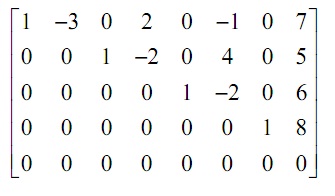The augmented matrix from a system of linear equations has the following reduced row-echelon form.

(a) How many equations are there in the system?
(b) How many variables are there in the system?
(c) How many of the variables are independent variables?
(d) Write out the solution set for the system.